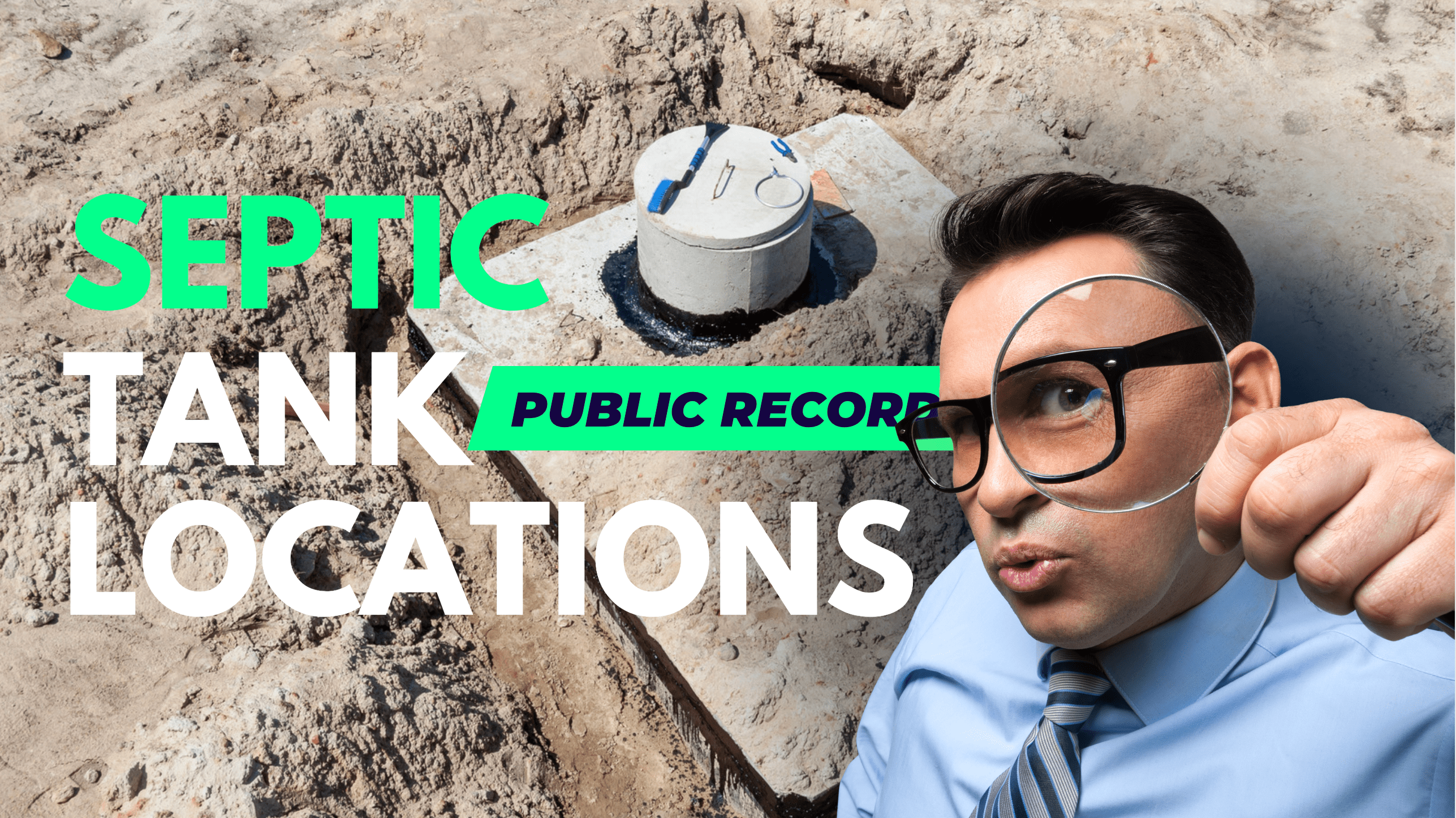As a property owner or someone looking to buy, knowing where your septic tank is can be very important. It helps with routine maintenance, avoiding accidental damage during yard work or building projects, and staying on the right side of local rules.
So, can anyone find out where a septic tank is located? In this blog post, we’ll explore what makes septic tank locations public record (or not) and how to get that info if it’s up for grabs.
We’ll also hook you up with other methods to figure out the location of your septic tank.
What affects septic tank location records availability?
Getting your hands on septic tank location records can depend on a few things, like:
Jurisdiction
Different places have different rules about sharing septic tank location info. Some make it public, while others keep it private.
Property age
Older properties might not have detailed records, making it harder to find the septic tank location.
Privacy concerns
In some areas, privacy matters might limit access to this info, requiring the owner’s permission or restricting who can see it.
How to get septic tank location info
If you can access septic tank location info where you live, here’s how to find it:
Local health departments
They often handle septic system stuff. Reach out to them for info on your tank’s location.
County recorder’s office
Also known as the county clerk or registrar, this office keeps property records. They might have septic tank location details on file.
Online databases
Some local governments have websites with property records, including septic tank info. Search their online resources using your property’s address or parcel number.
Can’t find septic tank location info? Try these tips

If you can’t find septic tank location records, don’t worry! Here’s what you can do:
Ask previous property owners or neighbors
If you just bought the place, try talking to the previous owners or their real estate agent. They might know the tank’s location and its maintenance history.
Also, don’t forget that your neighbors with similar properties might have some helpful tips, so their knowledge can be pretty valuable too.
Homeowner’s Inspection Report and Finding Your Septic Tank
When you buy or sell a property, there’s usually a thorough home inspection to check everything out. This might include a septic system evaluation, and the inspection report can have some helpful info about your septic tank, like:
Location: The report should tell you where the tank is, making it easier for new owners to find and take care of it.
Size and material: It might also have details on the tank’s size and what it’s made of, helping you understand how much it can hold and its upkeep needs.
Condition: The report should give you the lowdown on the tank’s condition, pointing out any damage, leaks, or other issues.
Maintenance history: The report could also have info on past maintenance, like when it was last pumped or inspected, so you know what’s coming up.
If you’ve got a homeowner’s inspection report, take a close look at the septic system part to learn more about your tank’s location and features.
Talking with Your Contractor for Septic Tank Info
Talking to the contractor who built your house can be a big help for learning about your septic tank:
Location and installation stuff: They might have blueprints or site plans showing the tank’s location. They could also share info about the installation, like any challenges or special features.
System specs: The contractor should know your septic system’s details, like tank size, material, and design, as well as the drain field type and layout. This helps you get a handle on capacity and upkeep needs.
Maintenance tips: They might have some useful advice for taking care of your septic system, like what plants to grow or how to handle construction projects.
When you talk with the contractor, have specific questions ready about your septic system and any concerns. Remember, their availability and record quality might depend on when your house was built, so be ready to look for info elsewhere if needed.
Finding Your Septic Tank by Locating the Main Sewer Line
Locating the main sewer line on your property can be a helpful way to find your septic tank. Here’s how to do it:
Find the main sewer cleanout: This access point is usually a vertical pipe with a cap, located near your home’s foundation. Look for it on the side where your bathrooms and kitchen are. The cap might be PVC or metal, and could be white, black, or green.
Follow the cleanout pipe: Trace the pipe as it runs away from your house. It usually goes straight from the cleanout to the septic tank. A probe or metal detector might help you follow it underground.
Look for septic tank signs: Keep an eye out for a visible lid, riser, or manhole cover. You might also notice a ground depression or different vegetation patterns. The tank is typically 5 to 10 feet from your house, but the distance can vary.
Keep in mind that the main sewer line might not lead you directly to the tank, especially if there are turns or junctions. Also, be careful when probing or digging to avoid damaging pipes, the tank, or other underground utilities.
Call in the pros
I did my best to give you enough info so you don’t have to spend any cash. But if everything I mentioned didn’t help you find the septic tank, there is another way, but it probably won’t be free.
Septic pros have the skills and tools to locate your tank, even if there aren’t any records. They’ll save you time and make sure you find it accurately.
Why you should know your septic tank’s location
There are a bunch of reasons to know where your septic tank is, like:
Easy maintenance and inspections: Knowing its location makes regular check-ups and upkeep a breeze, keeping your system running smoothly.
Avoiding expensive damage: Knowing where your tank is helps you avoid accidentally wrecking it during landscaping or construction projects.
Staying on top of local rules: Local laws might have rules about where septic tanks can be. Knowing your tank’s location helps you follow these regulations and avoid fines.
Did you know that an abandoned septic tank can cause a sinkhole? This is another reason you should know where your septic tank is.
Conclusion
Septic tank locations being public record depends on various factors. These include jurisdiction, property age, and privacy concerns. Remember that access to this information can differ greatly based on where you live.
Knowing your septic tank’s location is essential. It helps with proper maintenance, avoiding costly damages, and complying with local regulations. Don’t underestimate the value of this knowledge when it comes to caring for your property.
As a property owner, it’s crucial to stay informed about your septic system. Explore the methods discussed in this blog post to find your septic tank location, and don’t hesitate to seek professional help if needed.
An informed property owner is a responsible one, and your septic system will thank you for it!

